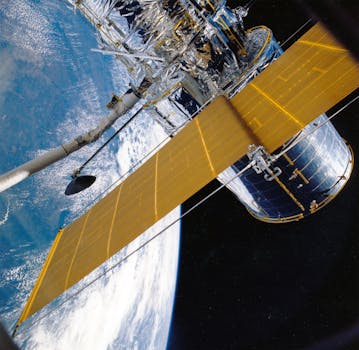Beyond Earth: How Recent Advances Are Shaping Satellite Telecommunications – Satellite Telecommunications

Beyond Earth: How Recent Advances Are Shaping Satellite Telecommunications – Satellite Telecommunications
Satellite Telecommunications has come a long way since its inception, and recent advances are shaping the industry in unprecedented ways. With the increasing demand for global connectivity, satellite telecommunications has become a vital component of modern communication systems. In this article, we will delve into the latest developments and innovations in satellite telecommunications, and explore their impact on the industry.
One of the significant recent advances in satellite telecommunications is the development of high-throughput satellites (HTS). These satellites have enabled faster data transfer rates, making it possible to support a wide range of applications, including broadband internet, video streaming, and mobile connectivity. HTS has also enabled the use of smaller, more portable user terminals, making it easier to establish connections in remote or underserved areas.
The Role of Advances in Technology
Advances in technology have played a crucial role in shaping the satellite telecommunications industry. The development of new satellite designs, such as the use of phased arrays and digital payloads, has enabled the creation of more efficient and flexible satellites. Additionally, the use of advanced materials and manufacturing techniques has reduced the cost and weight of satellites, making them more accessible to a wider range of users.
Another significant development in satellite telecommunications is the emergence of satellite constellations. These constellations, comprising multiple small satellites, have made it possible to provide global coverage and connectivity. Companies such as OneWeb, SpaceX, and Amazon’s Kuiper Systems are leading the charge in this area, with plans to launch thousands of satellites in the coming years.
Challenges and Opportunities
Despite the many advances in satellite telecommunications, there are still significant challenges to be addressed. One of the major challenges is the issue of spectrum allocation and management. With the increasing demand for satellite communications, there is a growing need for more efficient use of the available spectrum. Additionally, the risk of interference from other satellite systems and terrestrial networks is a significant concern.
However, these challenges also present opportunities for innovation and growth. The development of new technologies, such as advanced beamforming and interference mitigation techniques, is helping to address these challenges. Furthermore, the increasing use of satellite telecommunications is driving investment and job creation in the industry, contributing to economic growth and development.
Conclusion
In conclusion, recent advances in satellite telecommunications are transforming the industry in profound ways. The development of high-throughput satellites, advances in technology, and the emergence of satellite constellations are just a few examples of the many innovations that are shaping the industry. As satellite telecommunications continues to evolve and improve, it is likely to play an increasingly important role in supporting global connectivity and economic development.




